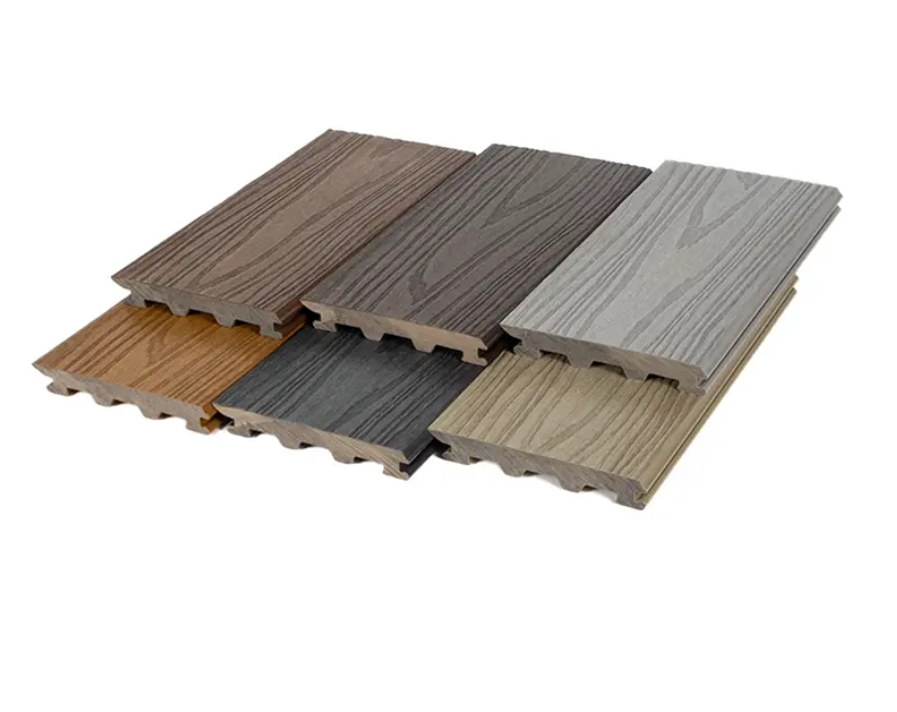In the ever-evolving world of outdoor flooring, homeowners and commercial designers alike are looking for alternatives that combine durability, beauty, low maintenance, and environmental sustainability. Two of the most popular contenders in this space are composite flooring (WPC) and UPVC flooring. While both outperform traditional wood in many ways, composite flooring has emerged as the superior choice in key areas that matter most—appearance, performance, and long-term value.

In this blog, we’ll explore five core advantages of composite flooring compared to UPVC, from aesthetic appeal to anti-slip performance. If you're trying to decide between the two, read on for a clear, helpful comparison that could save you time, money, and effort.
Both composite and UPVC flooring are engineered as alternatives to traditional wood. They promise longevity, low maintenance, and weather resistance. However, their core compositions set them apart:
UPVC Flooring is made of 100% plastic—completely non-porous and water-resistant but lacks natural aesthetic.
Composite Flooring (WPC) combines recycled plastic and wood fibers, offering moderate water absorption (much lower than wood), and a more natural appearance.(Reasons for Choosing WPC Composite Flooring)
In theory, both are low-maintenance solutions. But in practice, composite flooring offers a more well-rounded performance, especially in aesthetic and environmental aspects.
| Composite Flooring | UPVC Flooring |
|---|---|
| Incorporates wood fibers, offering realistic wood-grain effects in various tones | Plain plastic look with limited color variety |
| Dual-sided design: one side with elegant dark wood grain, the other grooved for function | Lacks natural texture, looks synthetic |
| Blends beautifully into outdoor décor | May feel out of place in natural settings |
Verdict: Composite flooring provides a warm, natural look that enhances outdoor ambiance, ideal for patios, pool decks, and garden spaces.
| Composite Flooring | UPVC Flooring |
|---|---|
| Handles thermal expansion with ease due to fiber structure | Becomes brittle under extreme temperatures |
| More stable in extreme weather with gap-reserved installation | Susceptible to cracking and warping |
Thanks to its blend of plastic and wood fibers, composite flooring maintains integrity in hot summers and freezing winters, while UPVC can show cracks and deformation over time.
| Composite Flooring | UPVC Flooring |
|---|---|
| Deep grain patterns + textured surface = high traction even when wet | Shallow grooves and smooth surface are slippery when wet |
| Grooved side enhances drainage and grip | Risky for children and seniors in wet conditions |
With its superior anti-slip design, composite flooring is the safer choice for households with kids, elderly people, or pets—and especially around pools or rainy climates.
| Composite Flooring | UPVC Flooring |
|---|---|
| Snap-fit hidden fixings, easy spacing, supports thermal expansion | Puzzle-like interlocking prone to breakage during install |
| Simple pressure-washing in spring—no painting or sealing needed | Similar cleaning, but durability issues raise hidden costs |
Composite decks are user-friendly to install and effortless to maintain, offering better long-term value. Fewer repairs mean fewer headaches.
Pairing your composite floor with the right base structure matters more than you think. Here's a quick comparison of plastic wood frames and aluminum alloy frames:
Eco-friendly: Made from 100% recycled plastic and recyclable.
Waterproof: Doesn’t rot, crack, or warp.
25-Year Residential Warranty: With correct installation.
Ideal for: Budget-conscious homeowners in mild climates.
Strength-to-Weight: Stronger and lighter than wood or plastic.
Corrosion & Rust-Resistant: Withstand extreme humidity, salt, and UV exposure.
50+ Years Lifespan: Longest among all frame options.
Quick Install: Modular design, adjustable bases, and no warping.
100% Recyclable: Sustainable with low production energy.
Perfect for: High-end or coastal projects, balconies, rooftops, and commercial spaces.
If you’re looking for a real wood look, high safety, and exceptional longevity, composite flooring clearly stands out over UPVC. When matched with plastic wood or aluminum alloy frames, you get a solution that’s stylish, sustainable, and built to last.
Recommended Usage:
Composite flooring + aluminum alloy frame: Best for high-end homes, commercial decks, coastal areas.
Composite flooring + WPC frame: Great for budget-friendly residential use with moderate climate conditions.
While UPVC flooring serves as a basic alternative to wood, composite flooring takes it a step further—delivering a perfect blend of natural aesthetics, superior performance, and sustainable value. With growing emphasis on safety, design, and durability, composite flooring is not just a better option—it’s the smarter choice.
At Praysun, we offer premium-grade composite flooring with unique double-sided designs, anti-slip textures, and durable finishes. Backed by a 25-year residential warranty, our solutions are made for lasting beauty and performance.
praysunmaterials@gmail.com